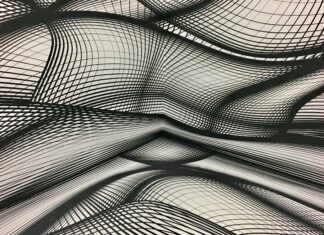Virtual reality experiences have taken us on journeys beyond our imagination, transporting us to worlds that exist only in the digital realm. In this extensive article, we dive deep into the realm of virtual reality experiences, exploring their evolution, applications, and the profound impact they’ve had on various industries and our daily lives.
Virtual reality (VR) experiences are a testament to human innovation and technological advancement. They immerse us in fully realized virtual environments, stimulating our senses and perception. From entertainment and gaming to education, healthcare, and beyond, VR has revolutionized the way we interact with the digital world.
The history of virtual reality experiences is a tale of ambition and technological progress. While the idea of virtual reality dates back to the mid-20th century, it wasn’t until the late 20th and early 21st centuries that VR technology began to take shape. Innovators and engineers laid the foundation for the immersive experiences we enjoy today.
The concept of virtual reality experiences involves the use of sophisticated technology to create a digital environment that simulates the real world or an entirely fictional one. This technology typically relies on headsets or goggles that cover a user’s field of view, providing a 360-degree visual experience. Coupled with motion tracking sensors and often haptic feedback devices, VR allows users to explore and interact with these digital realms as if they were real.
One of the first significant milestones in the evolution of virtual reality was the creation of the Sensorama machine by Morton Heilig in the 1950s. The Sensorama aimed to provide an immersive, multisensory experience by combining stereoscopic 3D visuals, surround sound, and even scent into a single machine. While it never achieved widespread popularity, it laid the groundwork for future VR development.
In the 1980s, VR technology began to emerge with headsets like the “Sword of Damocles,” a precursor to modern VR headsets. This system, created by Ivan Sutherland, used a head-mounted display connected to a mechanical arm that suspended from the ceiling. It was bulky and expensive, but it demonstrated the potential for immersive experiences.
The 1990s brought the first commercial VR systems, including the Virtuality Group’s arcade machines and Nintendo’s Virtual Boy. While these systems offered a taste of virtual reality, they were limited in their capabilities and faced challenges related to cost and content.
Fast forward to the 21st century, and we witnessed a renaissance of virtual reality experiences. The introduction of devices like the Oculus Rift and HTC Vive marked a significant leap in VR technology. These headsets offered high-quality graphics, accurate tracking, and a library of content that ranged from immersive games to educational experiences.
Gaming is one of the primary domains where virtual reality experiences have made a substantial impact. VR gaming takes the idea of immersion to a new level. Gamers can step into their favorite virtual worlds, engaging with the environment and characters in ways that traditional gaming could never achieve.
For example, titles like “Beat Saber” combine rhythm and lightsabers, challenging players to slice through blocks to the beat of music. It’s an intense, physically engaging experience that marries music, rhythm, and motion.
Beyond gaming, virtual reality has had a profound influence on the world of education. It offers a dynamic platform for interactive and immersive learning. In virtual classrooms, students can explore history by walking through ancient civilizations, dissect virtual organisms, or journey to the far reaches of the universe. VR not only engages students but also enhances their understanding of complex subjects.
The healthcare industry has harnessed the potential of virtual reality experiences as well. Medical professionals use VR for training, surgery simulations, and rehabilitation. VR can provide a safe space for surgeons to practice and refine their skills before performing actual procedures. It’s a tool that can save lives by reducing the margin for error.
In rehabilitation, VR offers engaging exercises for patients recovering from injuries or surgeries. These exercises can be tailored to an individual’s needs and monitored for progress. VR takes the monotony out of rehabilitation, making it more enjoyable and motivating.
Virtual reality experiences also extend their reach to the field of architecture and design. Architects and designers can use VR to create virtual walkthroughs of buildings and spaces. Clients can step into these virtual models, experiencing the design as if it were real. This level of interactivity fosters better communication and ensures that everyone involved in the project is on the same page.
Entertainment and storytelling are another dimension of VR experiences. VR films and narratives have the power to transport viewers to other worlds. Instead of passive observers, audiences become active participants in the story, choosing their perspectives and influencing the narrative. This shift in storytelling is redefining how we engage with narratives and can lead to more empathetic and immersive experiences.
The automotive industry has found value in VR experiences as well. Car manufacturers use VR to design and visualize vehicles in 3D. Virtual showrooms allow potential buyers to explore and customize cars in a digital space. VR can even simulate driving experiences and demonstrate the features of a vehicle without the need for a physical test drive.
The impact of virtual reality extends to how we perceive and manage our own well-being. Stress relief and mindfulness applications in VR offer calming environments for relaxation and meditation. Users can escape to tranquil settings, helping to reduce stress and anxiety.
Furthermore, virtual reality experiences have a significant role in enhancing sports training and performance. Athletes can use VR simulations to hone their skills and prepare for real-world competitions. These immersive training scenarios provide a safe and controlled environment for practice.
In the field of aviation, VR experiences have been instrumental in pilot training. Flight simulators use VR technology to provide a realistic flying experience without leaving the ground. These simulations can replicate various aircraft and flight conditions, enabling pilots to gain valuable experience and training.
Virtual reality isn’t just about exploring the extraordinary; it can also offer practical solutions for everyday tasks. In retail, for example, VR is transforming the way consumers shop. Virtual try-on experiences allow customers to visualize how clothing and accessories look on them without the need to visit a physical store. This technology is especially valuable for online shopping, where customers can’t physically try on items.
VR’s influence extends to the realm of art and creativity. Artists are using VR tools to create three-dimensional sculptures and paintings in a virtual space. This adds new dimensions to traditional art forms and opens up exciting opportunities for artistic expression.
Even in the realm of communication, VR experiences are shaping new possibilities. Social VR platforms enable users to connect with friends and family in virtual spaces. These spaces offer opportunities for gatherings, events, and shared activities, even when physical distance separates participants.
The impact of virtual reality experiences goes beyond entertainment and into the world of science. In research and data visualization, VR provides a unique environment for exploring complex data sets. Scientists and researchers can interact with data points in three dimensions, gaining new insights and perspectives.
For astronauts, VR serves as a training tool for space missions. It can replicate the conditions of space and simulate the experiences of extravehicular activities. VR is instrumental in preparing astronauts for the challenges of working beyond Earth’s atmosphere.
Environmental conservation is yet another field where VR experiences play a role. VR apps can immerse users in natural environments, from coral reefs to rainforests, fostering a sense of connection with the natural world. These experiences can raise awareness about environmental issues and the importance of conservation.
In the field of cultural heritage, VR experiences are preserving and sharing historical sites and artifacts. VR apps can recreate ancient civilizations, lost cities, and cultural landmarks. They offer a new way to explore and learn about the past, adding depth and context to historical understanding.
Moreover, VR’s impact on architecture and urban planning is transformative. Architects can use VR to create lifelike models of buildings and cities, enabling stakeholders to experience how a new structure will fit into the existing urban landscape. This tool aids in design decisions and ensures that projects align with the city’s vision.
The impact of virtual reality experiences extends to the realm of environmental awareness and sustainability. VR can be used to educate users about the impact of human activities on the environment and ways to promote sustainability. By visualizing these issues, VR can encourage people to make more informed and eco-friendly choices.
The future of virtual reality experiences holds even more promise. With advancements in hardware and software, we can expect higher resolutions, improved haptic feedback, and enhanced realism. Additionally, the integration of AI and machine learning will make VR experiences smarter and more adaptive to individual preferences.
In conclusion, virtual reality experiences have ushered in a new era of immersive and interactive engagement. From entertainment and gaming to education, healthcare, design, and various industries, VR has changed the way we perceive and interact with the digital world. As the technology continues to evolve, we can anticipate a future where VR becomes an integral part of our daily lives, enhancing the way we learn, work, play, and connect with the world around us.
Immersive Environments:
Virtual reality experiences provide users with fully immersive digital environments that can replicate the real world or create entirely fictional spaces.
360-Degree Visualization:
VR headsets offer a 360-degree field of view, allowing users to look around and explore these virtual environments as if they were real.
Motion Tracking:
VR systems often incorporate motion tracking sensors that monitor the user’s movements, ensuring that their interactions with the digital world are accurate and responsive.
Interactivity:
Virtual reality experiences encourage interactivity, enabling users to engage with and manipulate objects in the virtual space.
High-Quality Graphics:
Modern VR technology offers high-quality graphics and visual fidelity, making virtual worlds appear more realistic.
Real-Time Feedback:
Haptic feedback devices in VR systems provide users with tactile sensations, such as vibrations, to enhance their sense of presence in the digital environment.
Educational Applications:
VR is used in education to create interactive and immersive learning experiences, enabling students to explore various subjects in a dynamic manner.
Medical Training and Simulation:
VR is utilized in healthcare for medical training, surgical simulations, and rehabilitation exercises, providing a safe and effective environment for professionals and patients.
Architectural Visualization:
Architects and designers use VR to create 3D architectural models that clients can virtually walk through, enhancing communication and design accuracy.
Environmental Awareness and Conservation:
VR experiences are employed in environmental and cultural preservation to immerse users in natural and historical settings, raising awareness about conservation and historical contexts.
Virtual reality experiences have unlocked new frontiers in the world of entertainment and storytelling. As this technology continues to evolve, we find ourselves on the brink of a transformative era in which narratives and immersive experiences are redefined. It’s a journey that has led us from the inception of VR to the vibrant landscape of creative possibilities that it offers today.
The emergence of virtual reality experiences is, in many ways, a reflection of our timeless fascination with storytelling. From the earliest cave paintings to epic poems and novels, humans have sought to transport themselves into different worlds through the power of narrative. VR takes this aspiration to an entirely new level, allowing us to not just imagine but to inhabit these worlds.
VR storytelling isn’t just about conveying a narrative; it’s about making you an active participant in the story. Unlike traditional forms of storytelling, where you’re a passive observer, VR narratives grant you agency. You’re no longer bound by the limitations of a fixed camera angle or the constraints of a two-dimensional screen. Instead, you can explore the story’s setting, choose your perspective, and even influence the direction of the plot.
This shift in storytelling fundamentally alters the way we experience narratives. Instead of watching a character embark on an adventure, you become that character. You’re no longer an observer; you’re a participant. This not only heightens engagement but also fosters empathy. When you inhabit a character’s shoes, you experience the story from their perspective, leading to a deeper emotional connection with the narrative and its characters.
Moreover, VR opens up new dimensions of storytelling, quite literally. With 360-degree visuals and spatial audio, VR narratives envelop you. You’re in the middle of the action, whether it’s exploring fantastical realms, solving mysteries, or navigating historical landscapes. The sensation of being surrounded by the story’s world creates a level of immersion that’s unprecedented.
The possibilities for VR storytelling are limitless. Imagine being in a detective thriller, examining clues and interrogating suspects in a virtual city. Or picture yourself on an epic quest through a mythical kingdom, battling dragons and forging alliances. You could explore historical events as if you were there, witnessing moments that shaped our world. VR narratives can take you to the future or the past, to distant galaxies or alternate dimensions.
But VR isn’t just transforming how we experience narratives; it’s changing the way we engage with characters. In traditional storytelling, characters are separate from you, existing on the other side of the screen. In VR, they become your companions, sharing your space and interacting with you. This proximity makes characters more relatable and human, enhancing the emotional impact of the narrative.
VR narratives have the power to put you in morally complex situations, where you must make decisions that shape the story’s outcome. These choices aren’t abstract; they have tangible consequences within the VR world. Such interactivity makes the narrative a living entity that responds to your actions, creating a sense of agency and responsibility.
The integration of AI and machine learning adds another layer to VR storytelling. These technologies enable narratives to adapt to your preferences and behavior. For instance, if you’re more interested in exploring the historical aspects of a narrative, the story might veer in that direction, providing you with relevant information and experiences. AI also allows for more dynamic and personalized interactions with virtual characters.
As we delve deeper into VR storytelling, it’s essential to acknowledge the potential challenges and ethical considerations. One concern is the risk of desensitization to violence or disturbing content, as VR can make such experiences highly immersive. Striking the right balance between engaging narratives and responsible storytelling is crucial.
Another consideration is the psychological impact of VR narratives. Experiencing intense emotions and situations in a VR context can be overwhelming, and it’s important to ensure that users have the tools and support they need to navigate these experiences safely.
In addition to traditional narratives, VR has the potential to reshape other forms of entertainment. For instance, live performances can take on new dimensions in virtual reality. Whether it’s a concert, theater, or a sports event, VR allows you to be present in the audience or even on the stage, offering a level of immersion that transcends the physical boundaries of the venue.
In the realm of gaming, VR experiences have opened up a world of possibilities. VR games take you to entirely new dimensions, where you can wield lightsabers, cast spells, or explore post-apocalyptic landscapes. The interactive and immersive nature of VR makes gaming an intense and physically engaging experience.
Exploration and education also benefit greatly from VR. Imagine embarking on a virtual field trip to the depths of the ocean, where you can observe marine life up close or explore shipwrecks. Or consider traveling through time to visit historical landmarks and understand their significance. VR experiences make learning dynamic and unforgettable.
VR has the potential to reshape social interactions and connections. Social VR platforms enable you to connect with friends and family in virtual spaces. These platforms offer opportunities for shared activities, gatherings, and events, even when physical distance separates participants. This has become especially relevant in a world where digital communication plays a significant role in our lives.
Creativity and artistry flourish in the world of VR. Artists are using VR tools to create three-dimensional sculptures and paintings in a virtual space. This technology allows for entirely new artistic expressions that exist in a realm beyond traditional media. It’s a canvas where creativity knows no bounds.
Moreover, VR extends its influence to fields like therapy and mental health. VR therapy sessions can help individuals confront and overcome phobias, manage anxiety, and address trauma. The controlled and immersive environment of VR provides a safe and therapeutic space.
The impact of VR extends beyond entertainment and into the realm of science. In research and data visualization, VR provides a unique environment for exploring complex data sets. Scientists and researchers can interact with data points in three dimensions, gaining new insights and perspectives.
Astronauts also benefit from VR experiences as a training tool for space missions. VR can replicate the conditions of space and simulate the experiences of extravehicular activities. This technology is instrumental in preparing astronauts for the challenges of working beyond Earth’s atmosphere.
Environmental conservation is yet another field where VR experiences play a role. VR apps can immerse users in natural environments, from coral reefs to rainforests, fostering a sense of connection with the natural world. These experiences can raise awareness about environmental issues and the importance of conservation.
In the field of cultural heritage, VR experiences are preserving and sharing historical sites and artifacts. VR apps can recreate ancient civilizations, lost cities, and cultural landmarks. They offer a new way to explore and learn about the past, adding depth and context to historical understanding.
In the realm of architecture and urban planning, VR experiences are transformative. Architects can use VR to create lifelike models of buildings and cities, enabling stakeholders to experience how a new structure will fit into the existing urban landscape. This tool aids in design decisions and ensures that projects align with the city’s vision.
The impact of virtual reality experiences extends to the realm of environmental awareness and sustainability. VR can be used to educate users about the impact of human activities on the environment and ways to promote sustainability. By visualizing these issues, VR can encourage people to make more informed and eco-friendly choices.
As we look to the future, the horizon of VR storytelling is filled with promise. Advancements in hardware and software will lead to higher resolutions, improved haptic feedback, and enhanced realism. The integration of AI and machine learning will make VR narratives smarter and more adaptive to individual preferences. It’s a future where the boundaries between the real and the virtual continue to blur.
In conclusion, virtual reality experiences are redefining the art of storytelling. From immersive narratives to dynamic interactivity, VR takes us on journeys that engage the senses and emotions like never before. With its impact on entertainment, gaming, education, exploration, social interaction, art, therapy, science, and conservation, VR is a transformative force that enhances our understanding of the world and our place in it.


















